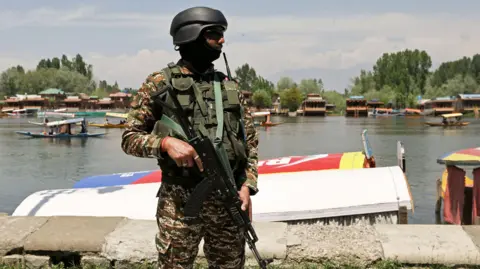Tensions between India and Pakistan often spill over into many aspects of their shared geography and history, and one of the most significant among them is water. With several major rivers flowing from India into Pakistan, a common question that arises—especially during times of conflict—is: Can India actually stop river water from flowing into Pakistan?
Let’s break it down.
The Indus Waters Treaty: The Foundation of the Water Relationship
To understand the water dynamics between the two countries, we need to start with the Indus Waters Treaty (IWT), signed in 1960 and brokered by the World Bank. This historic agreement has withstood multiple wars and decades of political hostility.

According to the treaty:
India got control of the eastern rivers: Ravi, Beas, and Sutlej
Pakistan got control of the western rivers: Indus, Jhelum, and Chenab
India is allowed "non-consumptive" use (such as irrigation and hydroelectric projects without storage) of the western rivers, but it cannot stop their flow or store significant amounts of water.
Can India Legally Stop the Flow?
Short answer: No, not entirely.
Under the Indus Waters Treaty, India cannot unilaterally stop the flow of water into Pakistan, especially from the western rivers. Doing so would be considered a violation of international law and would spark major diplomatic consequences.
However, India has some flexibility within the treaty:
It can maximize its usage of the eastern rivers, sometimes diverting water that would otherwise flow into Pakistan.
It can build run-of-the-river hydroelectric projects on the western rivers (as long as they don’t store water).
It can improve irrigation infrastructure to minimize loss and make full use of its allotted share.
What Has India Said in Recent Years?
In the wake of attacks and border skirmishes, Indian leaders have sometimes brought up the treaty in national discourse. After the 2016 Uri attack and the 2019 Pulwama attack, Indian ministers publicly mentioned re-evaluating the treaty.
In 2019, India’s then Water Resources Minister Nitin Gadkari tweeted:
“Under the leadership of Hon'ble PM Narendra Modi, our government has decided to stop our share of water which used to flow to Pakistan. We will divert water from eastern rivers and supply it to our people in Jammu and Kashmir and Punjab.”
This statement referred to diverting India’s rightful share—not stopping Pakistan’s share. While strong in tone, it was still within the legal boundaries of the treaty.
What Are the Technical and Environmental Challenges?
Even if India wanted to build dams or diversion channels to fully use its share of the water, it wouldn’t happen overnight. Major infrastructure projects take years of planning, investment, and construction. Additionally, there are geographical limitations—some of the terrain is mountainous and difficult to access.
There are also ecological concerns. Messing with river systems can impact local agriculture, ecosystems, and communities—on both sides of the border.
What Could Happen If India Violated the Treaty?
If India were to unilaterally block water flow:
It could lead to international arbitration or legal action.
It could provoke retaliation from Pakistan.
It would likely damage India’s reputation as a law-abiding nation in the global community.
So, What’s the Verdict?
India cannot legally stop water from flowing into Pakistan—not without violating the Indus Waters Treaty and international norms. However, India can fully utilize its share and invest in projects that improve its own water management.
Rather than a tool of conflict, water could ideally be a pathway to cooperation—if managed wisely and peacefully.
Have thoughts on the Indus Waters Treaty or the future of water diplomacy in South Asia? Share your views in the comments below!
For more beauty tips and celebrity insights, visit share4all.cc or gag4all.com.


















Responses (0 )